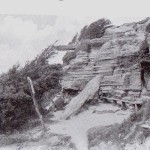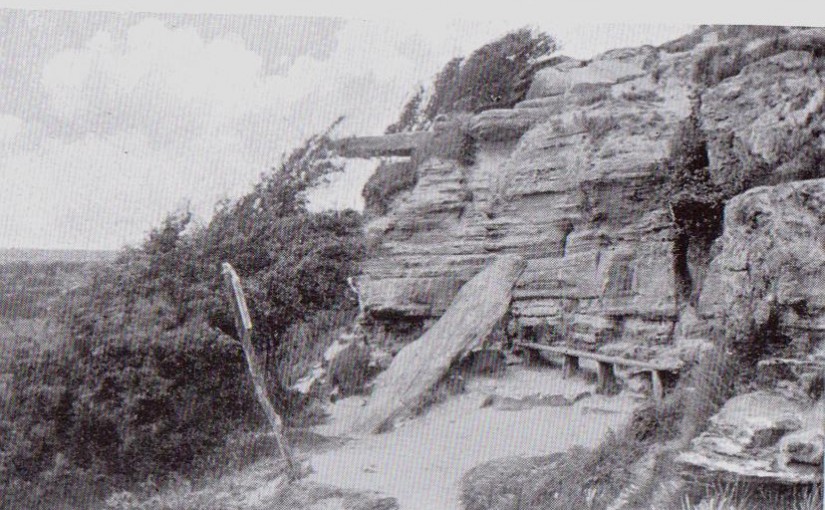BY TONY MAY
I have been in a somewhat romantic mood of late and as I approach my 49th birthday as a Batchelor I have been spending rather more time than is healthy perhaps reflecting on the course of my life so far. I love kids and am quite the biggest kid on the planet myself so the idea of spending time with ‘little people’ who I then have the excuse to buy a train set for (complete with ‘Fat Controller hat and whistle for ‘Dad’) appeals immensely.
Sadly, life never quite works out to be as idealistic as we would like it to be, does it? I mean, do any of us ever really know just what it is we want? How many of us pursue a dream only to find when we actually make our perceived dream come true that it turns into more of a nightmare than anything else.

Since discovering the joys of collecting records in the late 1970’s, I have essentially been married to music. As a smitten man cannot live without his beloved wife so I cannot function without access to music! Sadly, of all the mistresses one could choose to have, music is by far the most flighty and ruthless of all. Not only does she change direction your love constantly evolves, re-invents herself and thinks little of leaving you in her wake…
I guess this is why I have taken an interest this month in Hastings most romantic of all tales – the story of ‘ Lovers Seat’…
The date is around 1785 and two lovers, Charles Lamb (originally from Rye, a Lieutenant in command of a revenue cutter called ‘The Stag’) and Elizabeth (Bessie) Boys (the daughter of Samuel Boys from Hawkhurst – a wealthy landowner and an ex High Sheriff of Kent -1782) are forced to meet in secret due to Samuel’s strong disapproval of their liaison.
It is not known why Samuel Boys took such a dim view of his daughter’s relationship with Lamb? Charles was after all in the Royal Navy and had a responsible job in the Preventive Service patrolling the Sussex coast from Dungeness Point to Beachy Head in charge of ‘The Stag’ (to do with smuggling). Surely, no man could wish for a more responsible a fellow to ask for his Daughter’s hand? That Samuel was so strongly opposed to the match, however, raises a few interesting questions for me…
Samuel was based in Hawkhurst (home of the infamous smuggling gang) could his opposition have been because he was not quite all he seemed and as such feared that should Lamb marry his daughter he may discover this? On the other hand, in his position as High Sheriff in 1782 (the principal enforcement officer in the country) is it possible Samuel had either seen evidence or heard reservations about the honesty/character/temperament of Lieutenant Lamb? Charles was known generally as ‘Captain Lamb’ though he was in fact only a Lieutenant – did Samuel see him as somewhat of a ‘chancer’ or did he have powerful friends warning him to be wary of him? Women are famously attracted to ‘bad boys’ after all, are they not?
In fairness, the notion that there was something dishonest about Charles Lamb does not seem likely. ‘Lamb House’ still stands in Rye today and records show that the family were well established and highly respected.
Whatever the reason for his disapproval, Samuel did all he could to keep his daughter away from Charles and sent Bessie away to live with a relative at Fairlight Place, near Hastings. True love will always find a way however (though it will have to get its skates on in my case!) and Charles soon discovered the retreat. The two lovers soon hatched a plan to enable them to meet and Bessie would signal ‘The Stag’ from the edge of the rocks in a whenever the vessel was in the area. The secluded place they met when he came ashore being our place of legend.
One night in January 1786 and still unable to get Samuels permission to marry, Charles brought a boat into the bay below their meeting place and under cover of darkness the couple slipped away to London via Hastings where they were married in St Clements Church in the Strand on January the 16th.
Over the years many tales have sprung up surrounding the eventual fate of the couple one in particular telling of the tragic death of them both. In fact, Charles and Bessie eventually settled at Higham, near Salehurst in Sussex where in 1788 a child Elizabeth Dorothy Lamb (their only child) was born. The marriage was by all accounts a happy one though, sadly, it is true that their union suffered a tragic end…
“Hastings Town” June 2014
All articles, photographs, films and drawings on this web site are World Copyright Protected. No reproduction for publication without prior arrangement. (Hard Copy Back Numbers Still Available) © World Copyright 2015 Cinque Ports Magazines Rye Ltd., Guinea Hall Lodge Sellindge TN25 6EG
